Two-thirds of companies experience churn rates of 5% or more but the numbers often look worse for SaaS companies. According to The SaaS Report 2019 from Reply.io, the average churn rate for monthly contracts is 14% and slightly higher on annual contracts at 15%.
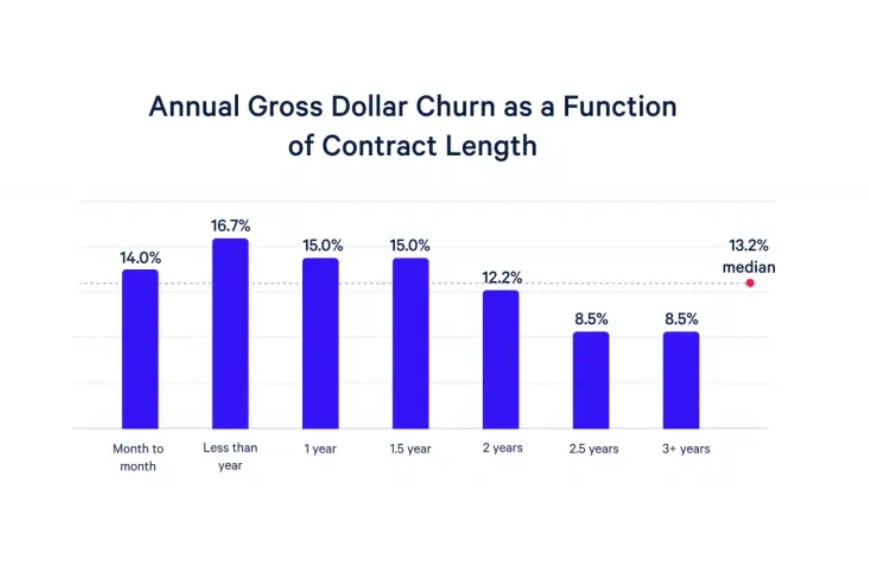
Studies also show a correlation between revenue and churn rate with many startups and smaller businesses reporting churn rates in the region of 60% while high-growth startups generating more than $10 million per year hit a much lower average of 8.5%
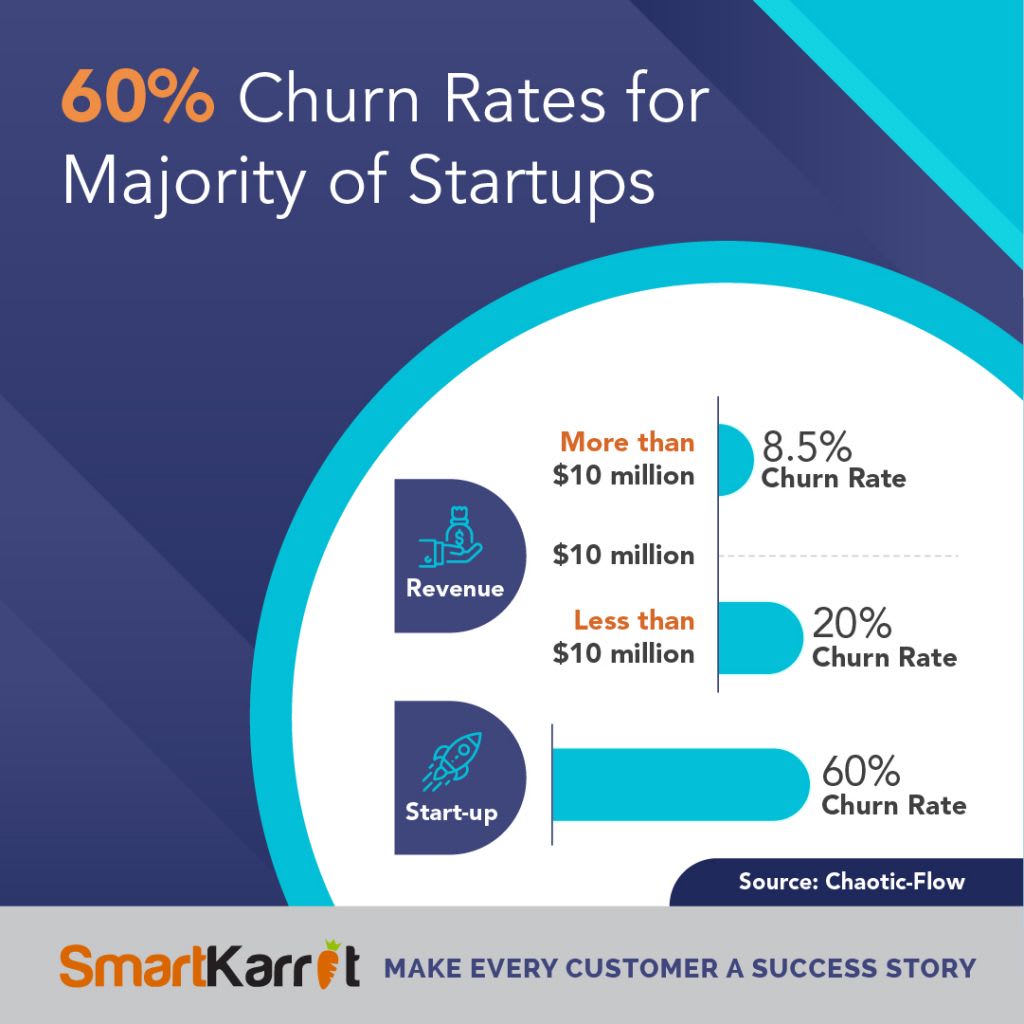
So it’s not unusual for SaaS companies to experience churn rates significantly higher than the 5% figure often reported as an average across all industries and business types.
More importantly, separate studies show that reducing churn by 5% can increase profit by 125% and this means more revenue, a stronger brand image and more resources to put into optimising for customer retention – at which point, you’ll hopefully start to see some of that correlation between revenue and lower churn rates for yourself.
And, to help you get there faster, this article features 19 proven strategies for increasing customer retention, reducing churn rates and increasing revenue for SaaS companies.
What are we looking at in this article?
This article compiles some of the most important customer retention strategies for SaaS companies and we’ve grouped these strategies into the following five sections:
- Product / service strategies: Retain customers with a quality SaaS product and service.
- Customer experience (CX): In-app UX and CX techniques for maintaining engagement and retaining customers.
- Incentivisation: Giving users reason to want to keep using your software product.
- Customer support: Solving issues, keeping customers happy and showing them why they’ll struggle to get a better service elsewhere.
- Email marketing: Campaign ideas to retain customers and maximise revenue.
These five sections cover each stage of the customer journey after a user signs up and starts paying for your software product. So we’re so interested in generating new leads or optimising the onboarding process for new users.
This article focuses on strategies that will keep your customers paying for your product so that new customers are driving real growth – not simply replacing your old ones.
Product / service retention strategies
Customer retention is about psychology more than anything else – especially when it comes to SaaS products where your customers are paying monthly or annual fees.
Basically, your aim is to nurture their perception that your product is still worth paying for. So let’s start by looking at retention strategies you can build into your product or overall service.
#1: Optimise your pricing strategy
Earlier, we referenced a report published by Reply.io that showed the average churn rates for different SaaS contract lengths and you can see how much of a difference this has on customer retention.

So it’s not only a question of how much you’re charging your customers but how often you’re billing them, asking them to renew or automatically renewing them to new contracts.
Generally speaking, annual contracts have a lower churn rate than monthly ones. Users are unlikely to cancel when they’ve already paid for the full year and annual contracts provide fewer opportunities to churn without “losing” money – see our article on sunk cost bias to find out why this psychological trap keeps customers paying.
So, the first strategy we can talk about is encouraging users to sign up to annual contracts and you’ll generally see this strategy employed on the pricing pages of SaaS products.
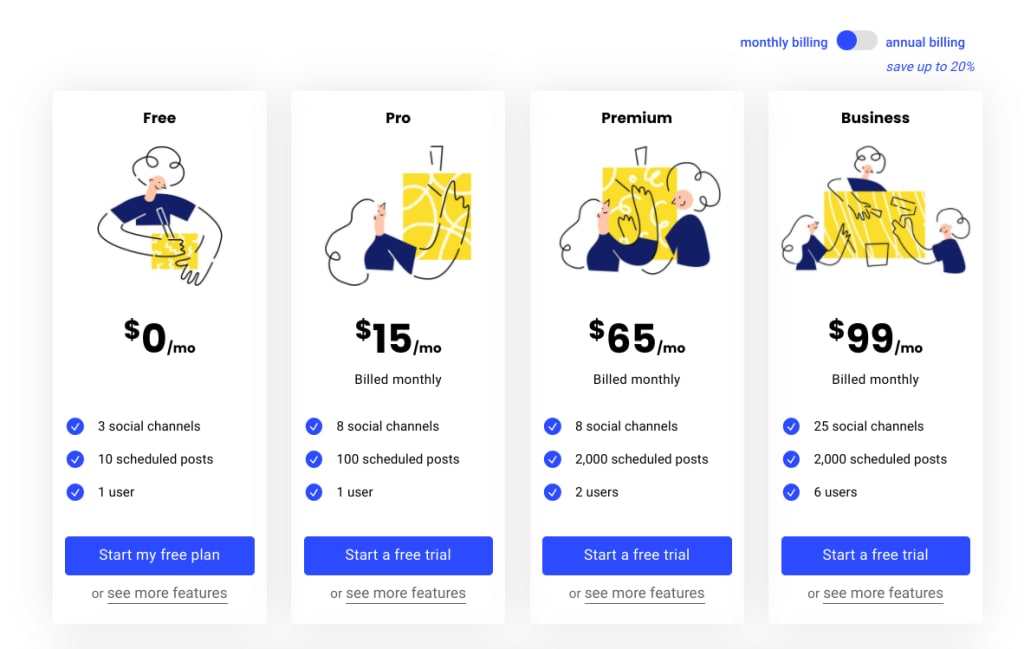
As you can see on this Buffer pricing page, it’s standard practice for SaaS companies to list monthly prices based on annual contracts where users pay for the full 12 months upfront.
In the top right corner of the pricing interface, there’s a toggle switch where users can choose to pay every month but the prices are 20% more expensive.
This incentivises users to sign up for an annual contract, which puts 12 months’ worth of money in the bank and gives you a year to nurture this customer so they stay signed up when the next contract is due to start.
The surprising truth about SaaS pricing
Logic might suggest that lower prices are the way to go if you want to keep more customers paying up for your software. However, price isn’t the only factor people consider when they buy products; they also have certain expectations in terms of quality and they inevitably associate higher prices with a higher level of perceived and expected quality.
As this study – published by the University of Texas at Arlington – shows, consumers rely on price to determine the quality of products.
As this study explains, high prices attract consumers when assessing quality is difficult and this is very relevant to SaaS products. The same study references a pricing test by one company’s R&D team that found the most expensive price attracted the most customers.
“So, $12.99 was really good, $15.99 not so good, $18.99 great. We found that at $18.99, we were starting to get consumers who would shop in both channels. At $18.99, it was a great value to a prestige shopper who was used to spending $30 or more [for a similar product]. But $15.99 was no-man’s-land—way too expensive for a mass shopper and really not credible enough for a prestige shopper.”
So don’t be afraid of raising your prices with the aim of attracting new customers. The challenge is keeping your existing customers happy with paying higher fees but there are a number of ways you can address this:
- Keep existing customers on the same rate
- Release new features to justify the expense
- Accept temporary churn and focus on retaining new customers
Increasing your prices for existing customers is always likely to result in temporary churn but the increased revenue may justify this. More importantly, you set a higher bar of perceived value for new customers and existing ones that keep paying after the initial increase – they’ve voted with their money that the product justifies the price increase and there’s a good chance they’ll continue to do so.
#2: Release regular updates & new features
SaaS companies face constant pressure to deliver the latest and greatest technology to maintain the perceived value of their products. Not only do the needs of your customers change but the list of competitors only ever seems to grow so you have to work hard to keep your product exciting to new and existing customers alike.
A key strategy for this is releasing updates and new features on a regular basis. At the very least, new releases help prevent existing customers from getting bored with the same old product but you can add in some healthy anxiety by announcing updates and features ahead of launch to build up excitement and keep users engaged.
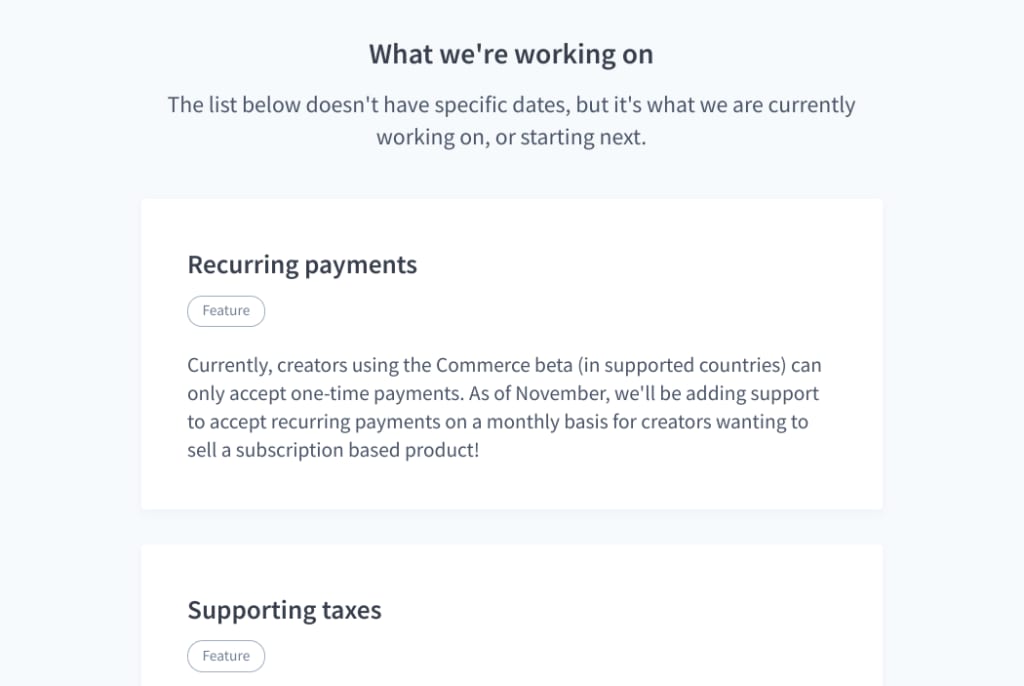
The image above shows part of ConvertKit‘s roadmap page where it lists all of the upcoming features and previous releases so that existing customers can see what they’ve got to look forward to. And you can send emails or in-app notifications to tell users about upcoming features, announce rollout dates and build up some hype ahead of launch.
Updates and feature releases are also an opportunity to address the concerns of your customers. You can fix bugs, introduce requested features and improve the user experience by listening to user feedback and testing design tweaks.
This way, you’re not only maintaining the perceived value of your product but also showing your customers that you listen to them and care about their needs – a great characteristic for retaining customers.
#3: Prioritise security
One topic that isn’t discussed enough when it comes to customer retention is security. However, according to Cisco, 85% of companies rate cybersecurity as “extremely important” or “more important” than before the coronavirus pandemic, which is attributed to the increased security risks of working from home.
So customers are increasingly concerned about security and regulations like GDPR mean companies are more liable than ever for data breaches. At the same time, consumers are becoming increasingly concerned about security and privacy but, as shown by the latest research from McKinsey, few take adequate protective measures – instead, they expect companies to protect their data for them.
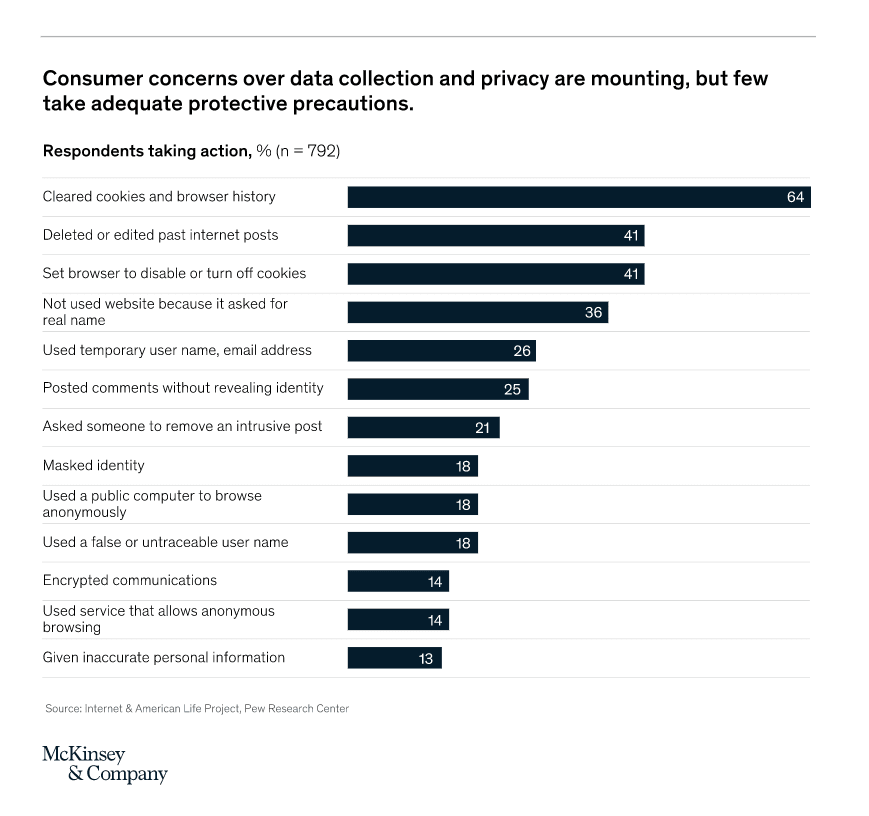
So B2B SaaS companies aren’t the only ones who have to show users they take security and privacy seriously – and you only have to look at WhatsApp’s ongoing struggles with updating its privacy policy, which prompted millions of users to ditch the platform.
The truth is, SaaS companies are expected to set a higher standard for security due to the nature of cloud technology and increased speculation over how tech companies like Google and Facebook handle data.
There’s no getting away from it: if you want your customers to stick around, you have to prove that their data is safe in your hands.
Customer experience (CX) retention strategies
Now, let’s delve a little deeper into the product itself and look at strategies you can use to retain customers by enhancing the customer experience (CX) to maximise engagement and keep people excited about using your software.
#4: Implement in-app guides, tips, etc.
In-app guides, tips and other prompts are a great way to maximise engagement from the very first session. Right off the bat, you can help new users get to grips with your product, reducing early churn from users who experience teething problems or find your product a little too overwhelming.
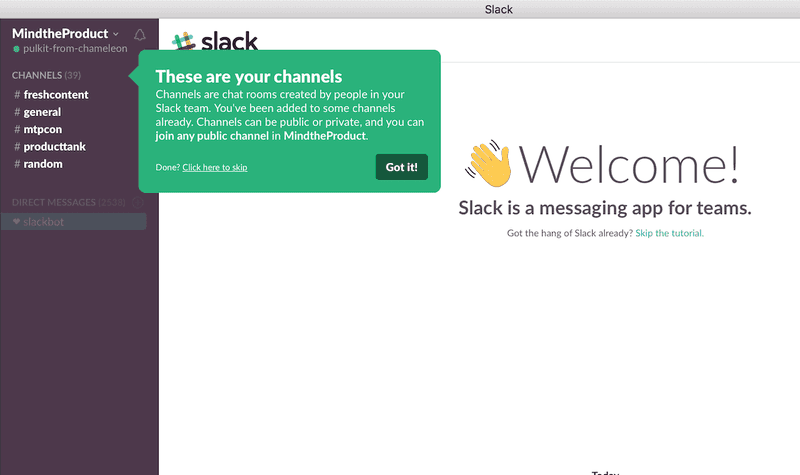
Slack is among the many SaaS products to provide this kind of introduction for new users with prompt messages or product tours that help people get to grips with the platform.
Depending on how complex your product is and how advanced you want to get with your in-app prompts, you can use real-time user data to send targeted prompts to users based on how they interact with your product.
For example, Userpilot allows you to contextually highlight features at the appropriate moment. So, let’s say your product is a landing page builder and one of your customers has just published a new page – you could highlight the A/B testing feature in your software to let users know that this is the next logical step to take.
Not only are you encouraging further engagement here but you’re helping users get the best out of your product and reducing the risk of them not being able to find a feature they’re looking for.
#5: Gamify the experience
Gamification is a powerful strategy for maximising engagement, helping users get to grips with new features and regular updates, and maintaining the desire to keep using your software product.
Here’s a quick explanation from HubSpot about why gamification can be so effective for SaaS platforms:
“Gamification is effective because it takes a boring or mundane task and makes it exciting and reward-driven. People love the feeling of accomplishment, so gamification rewards them with mini incentives while they progress towards an overall goal. This keeps the user continuously engaged and makes it more likely that they’ll accomplish the task at hand. This system is particularly effective when encouraging participants to complete a long-term or complicated task.”
Should SaaS Businesses Invest in Gamification? by Clint Fontanella for HubSpot
That same HubSpot article references The Gamification at Work Survey, published by training software provider TalentLMS, which finds the vast majority of employees prefer gamified software and feel gamification improves their performance.
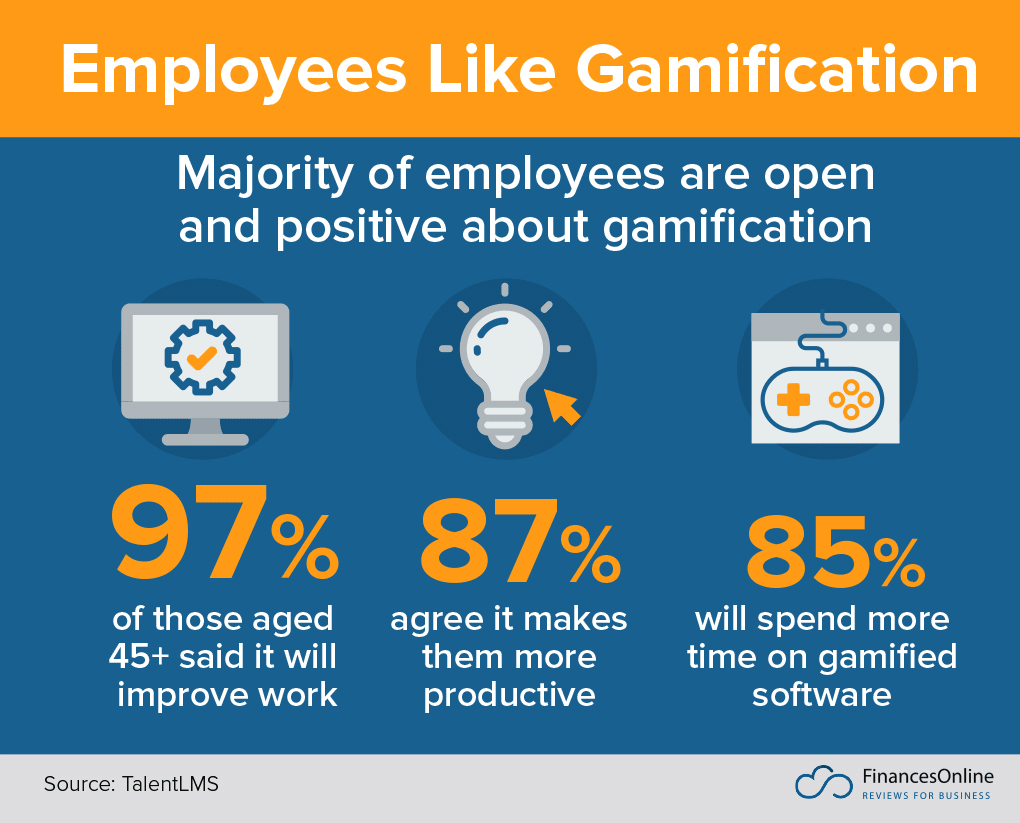
According to the study:
- 97% of those aged 45+ said gamification improves work
- 87% say it makes them more productive
- 85% say they will spend more time on gamified software
Separate studies also show that gamification is becoming an even more effective engagement and retention strategy as Millennials (Gen Y) climb the ranks at companies.
According to a study from Accenture, entitled Making SaaS successful Through Gamification (PDF), anyone born after 1971 (half of Gen X) responds well to ramification, having grown up in the post-arcade game era.
“Gamification has become increasingly relevant because today’s workforce is shifting to Gen Y, a generation for whom playing video games is the norm. In fact, gamification is the new normal for anyone born after 1971–in other words, the bulk of today’s workforce and our economy’s key spenders.”
In the same study, Accenture outlines the following three key goals of gamification in SaaS software:
- Rapid initial adoption: They must motivate their employees to make the switch from working with the legacy application to the new system.
- Sustained engagement: They must drive continuous usage over time so employees form new behaviours and ingrain the SaaS application’s usage into their daily work.
- Data accuracy: They must ensure information is entered and updated into the new application regularly.
A common example of gamification in SaaS software is rewarding users for completing their profile with the data you need to segment and nurture different types of customers.
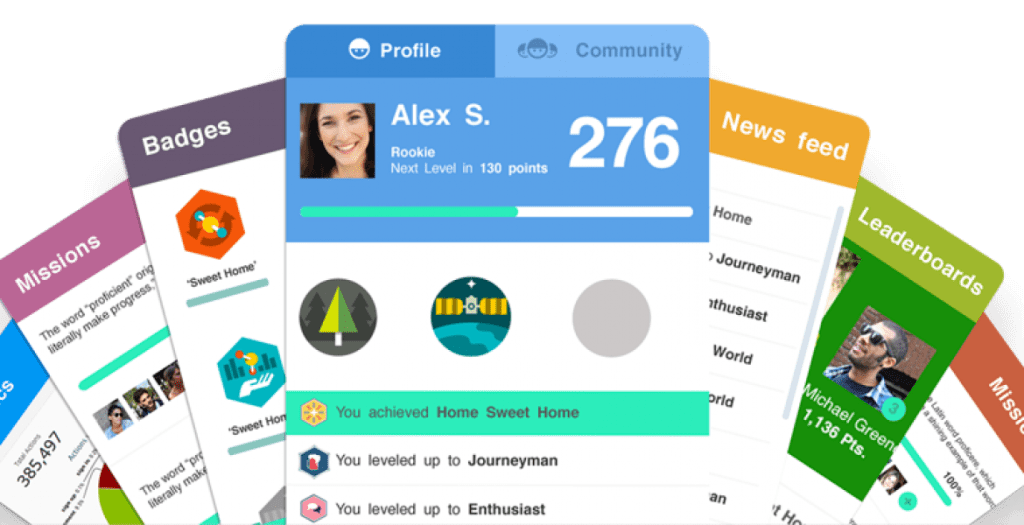
A lot of platforms simply place a percentage counter to illustrate how much of their accounts is complete and gently encourage them to hit the 100% mark. Alternatively, you could reward users by gradually unlocking features as they fill out their profile, work their way through your in-app tutorials or complete certain tasks.
You can also gamify engagement by implementing progress counters for task completions, achieving goals, racking up usage minutes and other benchmarks.
Microsoft Teams has even built an Incentives App into its platform to help businesses gamify the system and workplace with points, leaderboards and digital bragging rights.
The most amazing thing about gamification is that you can incentivise engagement without rewarding users with anything of real value. The same emotional triggers that make simple games like Candy Crush and Angry Birds so addictive can entice customers to keep using and paying for corporate SaaS software.
#6: Encourage users to set goals & targets
Even if you don’t go as far as gamifying your software with points and leaderboards, you can still incentivise engagement by encouraging users to set goals and targets.
And, instead of rewarding users with badges or level-ups, you can trigger the same dopamine hit of satisfaction by ticking tasks off their to-do list, showing progress bars for ongoing tasks, sending prompt notifications to encourage users back to your platform and showing performance data to compare recent usage to their most successful or productive days, weeks and months.
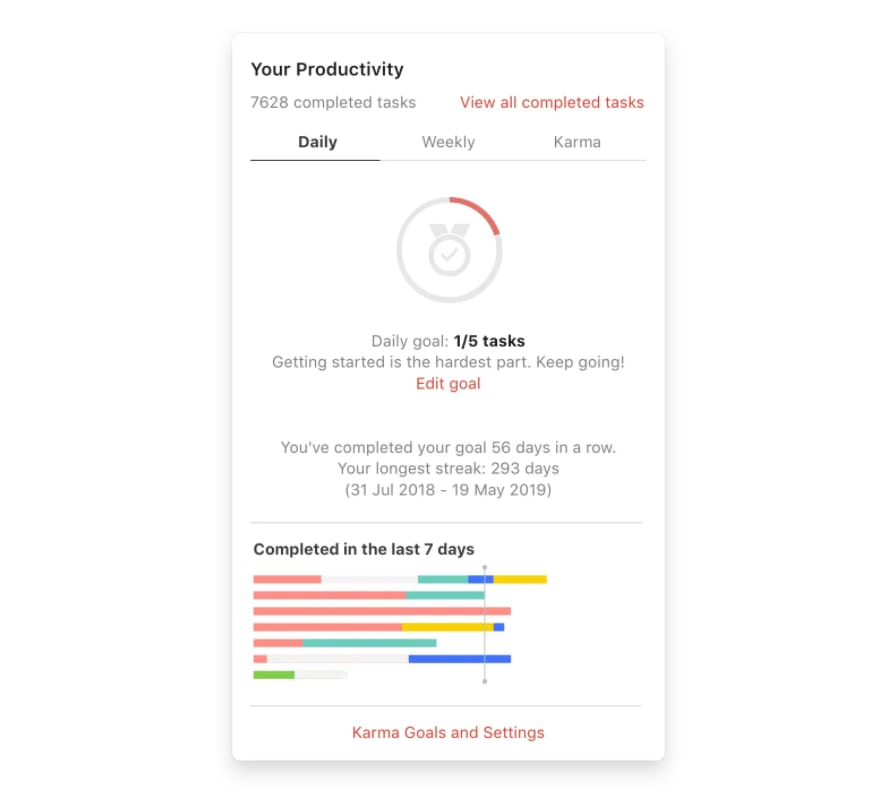
Showing users the best of their session data can trigger self-competitiveness, setting their best performance as the default target for ongoing usage.
You can also reinforce this with emails and notifications showing them all of the great things they’ve done with your product so the benefits of staying on board are always fresh in their mind.
#7: Open a beta programme
Opening a beta programme is a great way to keep your audiences engaged with new features before they officially roll out. There are several psychological triggers this satisfies and one of the most important of these is the sense of exclusivity users get from being involved in a small priority group.
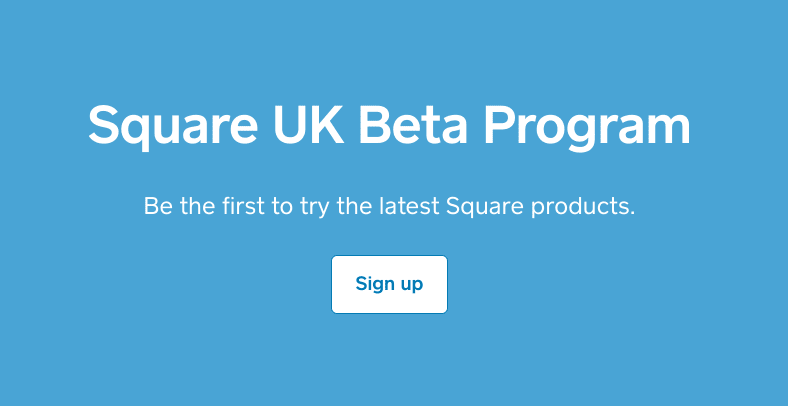
Exclusivity is a powerful thing and we looked at how several of the likes of Facebook and Gmail used this to build huge user bases in a previous article, What is Growth Marketing? With 30+ Examples, Tactics & Hacks.
Aside from this sense of exclusivity, a beta programme also promotes an active sense of inclusivity where your customers are involved in the testing and feedback process of new features and updates. This, in turn, shows members that their feedback is valued and that platform changes are informed by the feedback of real users.
On a more practical level, beta programmes give members access to new features sooner, allowing them to achieve more with your software and get to grips with new features by the time they make official rollout.
Incentivisation as a retention strategy
A great software product is always the best tool for keeping users engaged but you can sweeten the deal by incentivising customers to continue using your platform, such as rewards or even gamified achievement, as we looked at earlier
#8: Reward users for their engagement
The most direct way to incentivise user engagement is to reward them for ongoing usage and there are countless ways you can do this. You might reward them with credit, a discount on their next payment or some kind of financial incentive that rewards continued usage.
Alternatively, you could implement a VIP programme for heavy or high-spending users to tap into the pull of exclusivity and you could require users to maintain their usage to hold onto VIP status to keep incentive high.
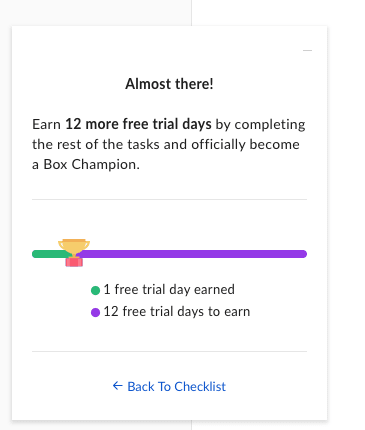
This process begins at the onboarding process with Box where new users are rewarded for completing introductory tasks and the length of their free trial is extended based on how many tasks they complete.
We’re venturing back to gamification here but this is an effective strategy, especially when the financial incentive of your rewards is small or there’s no financial aspect at all.
#9: Run a loyalty programme
While there’s an obvious overlap between loyalty programmes and rewarding users for engagement, the key characteristic of loyalty schemes is that you’re rewarding purchases, not simply usage.
This might be in-app purchases, product purchases or continued monthly/annual payments – and perhaps a combination of the three. Either way, you’re rewarding users on a per-purchase basis or at spending landmarks – e.g.: every $1,000 spent.
Uber Rewards is a perfect example of this where users gain points for every completed ride (ie: every payment made), which contribute to future “rewards and benefits”.
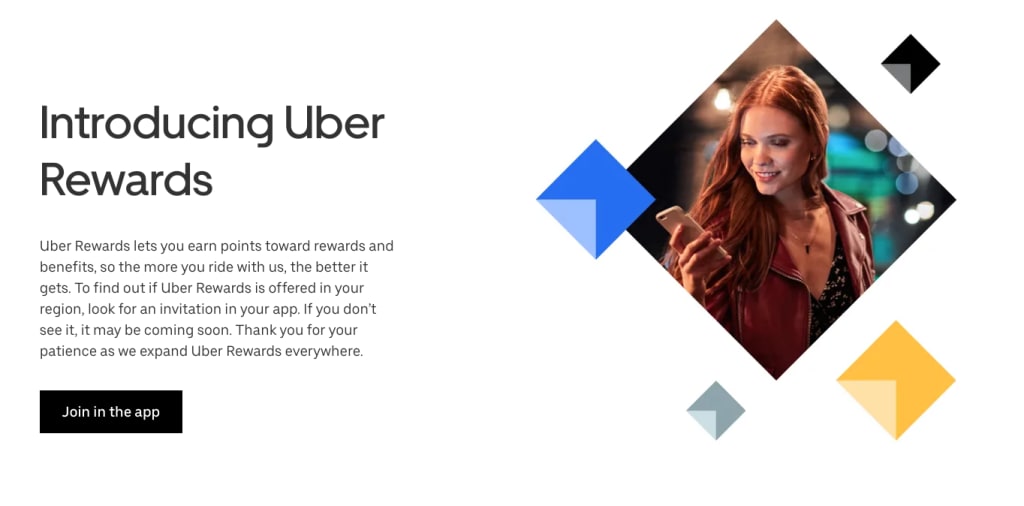
Not only does this reward ongoing usage but also incentivises users to continue using the platform, use it more often and use it ahead of other rival platforms.
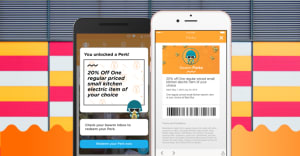
Likewise, Foursquare’s Swarm app launched Swarm Perks in 2016 to reward users with real-world prizes, offers and discounts for checking in via the app, creating a gamified loyalty programme that both rewards and incentivises ongoing usage.
#10: Track & respond to user data
When your aim is to maximise engagement and retention, timing is a crucial factor in delivering incentives, notification or rewards before users lose so much interest that it’s difficult or impossible to bring them back on board.
For this reason, incentives are most effective when they’re delivered based on user data that shows drops in engagement or signs that customers could be about to churn, allowing you to respond before they stop using your software or cancel their subscription.
For example, if you know that usage tends to drop mid-way through the second annual contract, this data suggests that you might want to put incentives in place ahead of this period to boost engagement through to the latter stages of the subscription and, then, you can focus on securing the renewal.
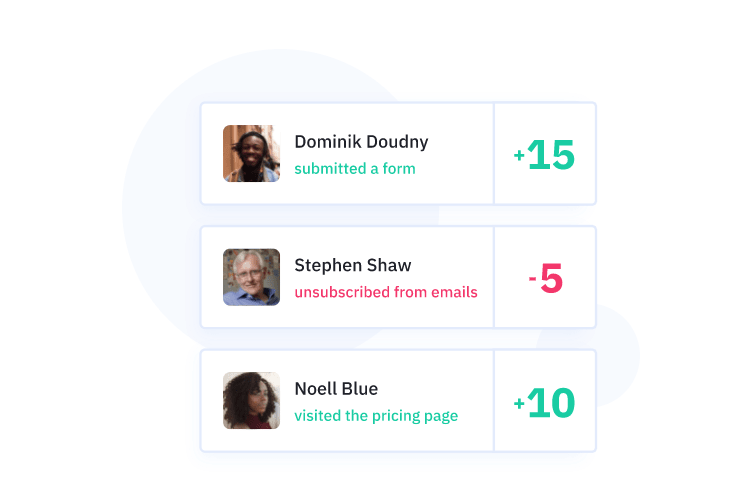
Better yet, you want an automated system for tracking engagement based on session data to compile user engagement scores and flag up indicators of engagement drops and potential churn – and this is one of the many roles ActiveCampaign plays for us here at Vertical Leap.
We use ActiveCampaign to track user session data, manage customer health and automate responses to drops in engagement through triggered notifications, emails and cross-platform messages.
This allows us to react to churn dangers before they materialise and keep users engaged while interest is still relatively high and they’re typically more responsive to our messages.
Customer support retention strategies
Understanding why software users stop using SaaS products and cancel their subscriptions is key to implementing effective retention strategies.
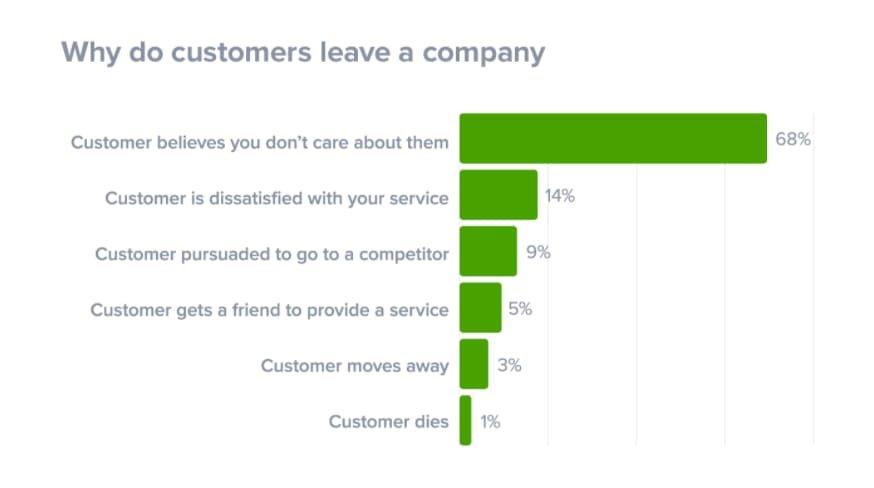
Time and again, studies show that the vast majority of churn is attributed to the perception that software companies don’t care about customers and their individual needs.
So, with this in mind, let’s look at how you can use customer service strategies to show users that you’re a SaaS company that genuinely cares about them.
#11: Online documentation & support
The first line of defence for a SaaS company is having sufficient online documentation and support resources that users can easily find and navigate online.
This documentation helps users get the best out of your software products and solve basic technical issues without needing to get in touch with your support team. Not only does this improve the customer experience and reduce the danger of churn, but it also lightens the load on your support team which is able to prioritise their efforts on more pressing issues.
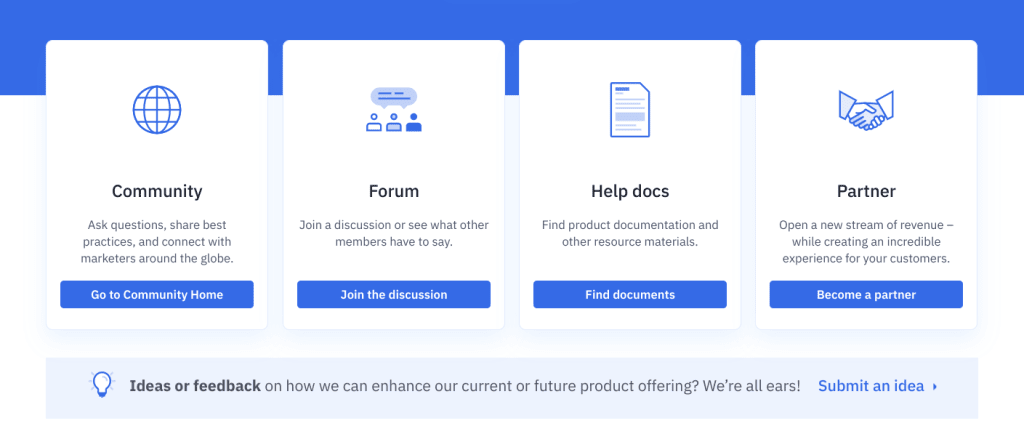
Another key benefit of having this kind of extensive online documentation is that you can automate first responses through chatbots, notifications and emails, pointing users to relevant online documentation while your human support team works through tickets.
Depending on the quality of your online documentation, you should be able to close a significant number of cases before your team even picks them up. This relies on striking a careful balance between extensive documentation that’s also easy to navigate and understand.
This, combined with an automated system that directs users to support content and asks them if this documentation has solved their problems, can handle a decent percentage of cases without support team members needing to get involved – a win for customers and your support system alike.
#12: Automate customer support
We touched on automation in the previous section and this is a key technology for SaaS companies, especially when you have large user bases to take care of with a finite support team.
The more you enable users to solve problems for themselves, the happier they are and the less strain is placed on your support team, which can focus all of its resources on cases that can’t be automated.
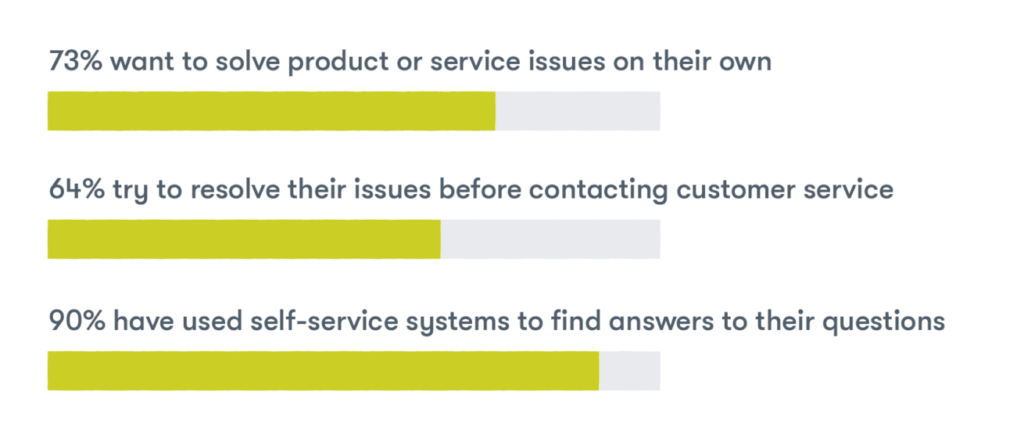
Crucially, studies show that users want to solve problems for themselves, without getting in touch with a technical support team – and why not? Self-service systems allow users to solve problems faster and get back to achieving better things with your software product.
The challenge is to automate as much of the customer support system as you can without dehumanising by it removing too many personalised interactions. Don’t forget that 68% of customers say they stop buying because they feel the company doesn’t care about them – so, once again, you have to strike a balance here.
As mentioned earlier, user data is your friend here and using a system like ActiveCampaign to automate customer support with personalisation helps you find this balance.
#13: Respond instantly (with value)
A key part of this is responding to customers instantly to demonstrate that you are dealing with their concern. Unfortunately, there’s another compromise here because a human support team can’t respond to every support ticket right away so you need a system that can deal with the inevitable delay between users submitting cases and team members picking them up.
Automating instant responses is easy but delivering meaningful replies that don’t simply tell customers that their ticket has been submitted and someone will be in touch as soon as possible.
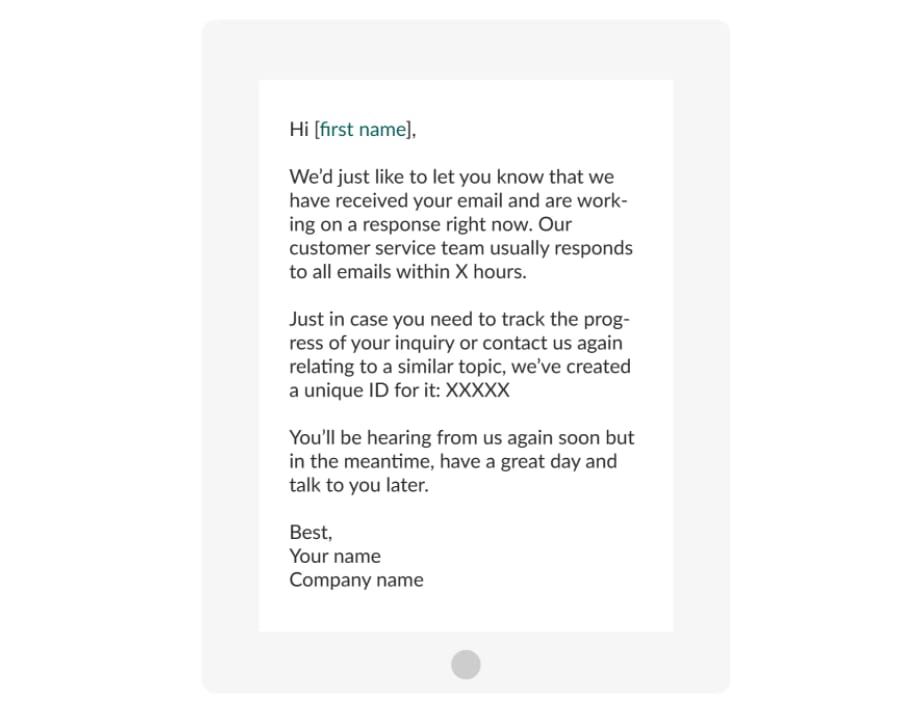
This is why it’s so important to have that online documentation and supplementary resources that you can direct users to while their ticket is waiting to be picked up by a team member.
Email isn’t your only channel to deliver instant responses, either. You’ve also got chatbots and live chat widgets to work with, which we’ll look at in more detail in the next section, but the important point, for now, is that delivering meaningful, instant responses is key to satisfying user needs while your support team works through cases.
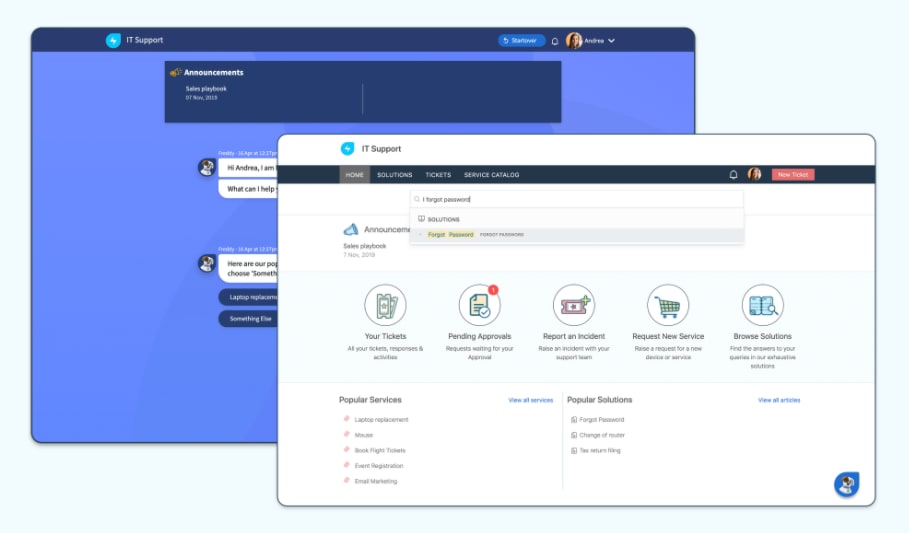
At the very least, you want to direct users to relevant support documentation that might help them solve their issue before a support team member steps in. First of all, this provides users with actionable steps that they can take while their ticket works its way through the queue and this buys your team crucial time to reduce any negative impact as the result of waiting times.
You can also optimise this process to increase the percentage of users who solve problems for themselves without any input from support personnel.
#14: Chatbots / live chat
Chatbots are an excellent way to deliver instant, interactive responses to technical issues on your website.
Once again, the aim here is to help users solve issues for themselves wherever possible but you can also use chatbots to collect crucial information that will help support team members to solve problems – e.g.: which browser or OS customers are using, which version of your software or any other relevant info you don’t already have access to.
We’ve tested out a lot of chatbots and live chat solutions and the big winner for us is Intercom, thanks to its intelligent system that continues to learn from every customer interaction.
We can also integrate bots with our human support team who can pick up cases when they’re available or when the automated conversation reaches a point where human intervention is necessary.
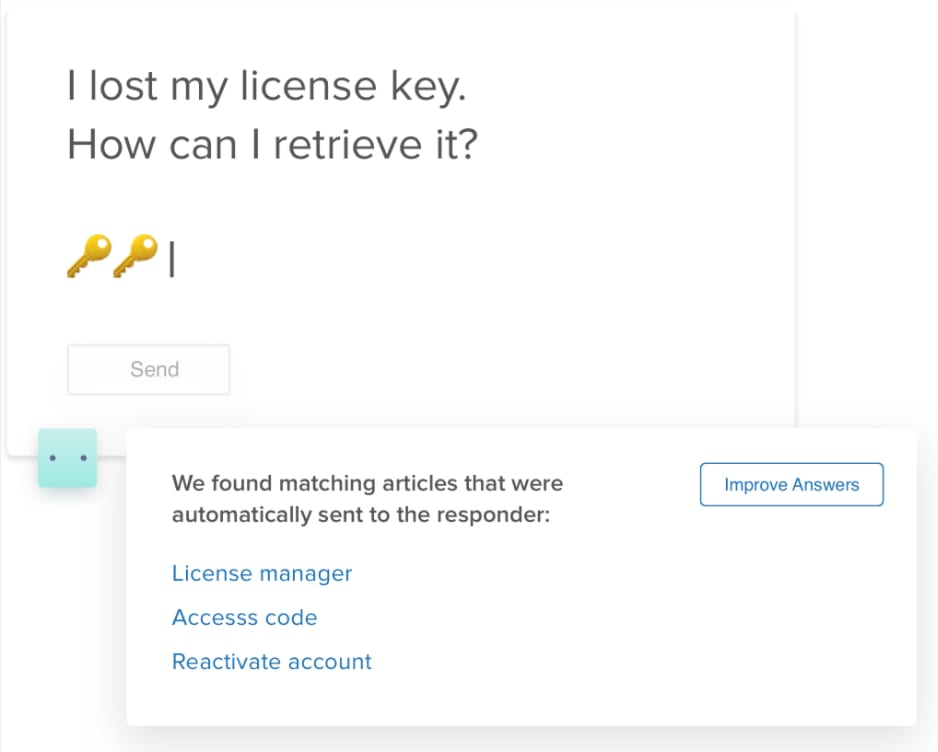
Another benefit of the conversational experience is that it actually takes longer for users to progress through the basics than it would through automated email responses where all of the same information is delivered in one message, rather than a series of segmented questions.
Despite this, engagement is actually higher, thanks to the interactive and segmented, personalised interactions – all of which builds a more satisfying experience, even though it takes longer to achieve the same outcome.
Again, psychology plays a huge role here.
#15: Customer feedback
Asking users to provide feedback shows them that their opinion matters and it also provides the opportunity to discover meaningful problems/improvements that will keep all of your customers happy for longer.
The obvious challenge is that getting this feedback from users adds friction to the experience so this is something you have to manage.
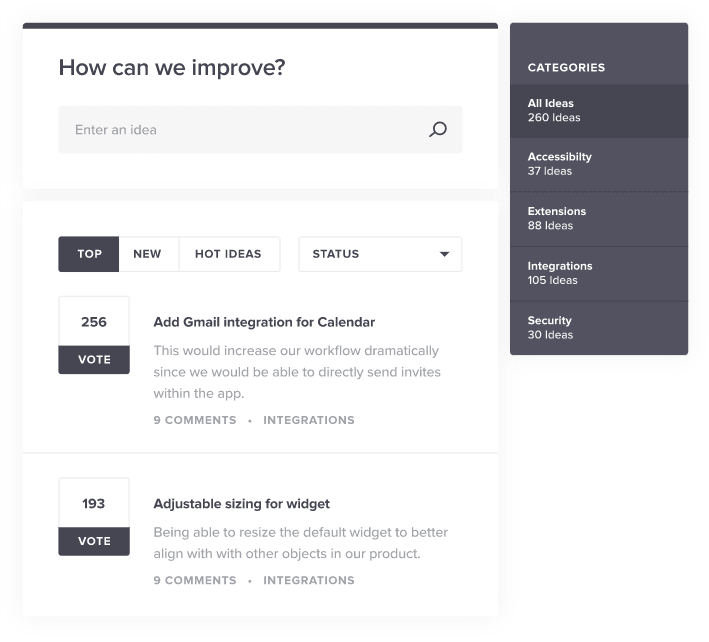
The good news is there are plenty of customer feedback tools designed specifically for SaaS companies and UserVoice (above) is a standout choice. The platform makes it easy to implement unintrusive feedback prompts into your software platform and collect insights without manually working through every response.
You can also capture feedback from Slack, Salesforce and Zendesk without switching apps.
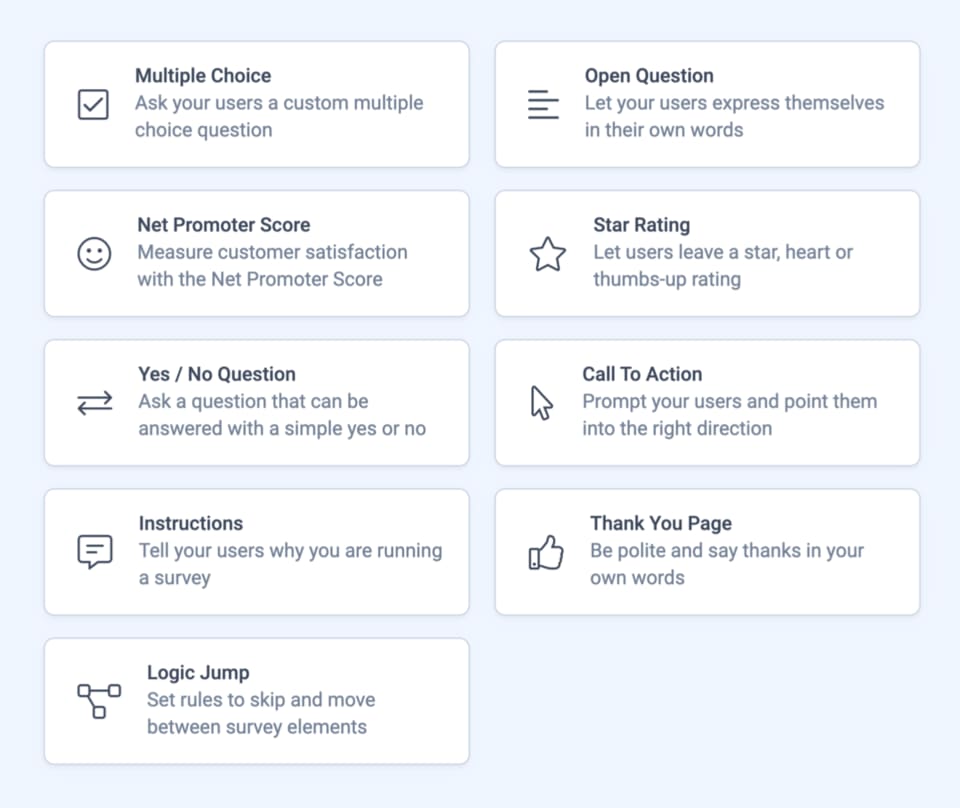
Refiner.io (above) is another option you might want to look at, which combines plenty of feedback options so you can find the preferred method of your user base.
Whatever tool you choose, the aim is to implement intuitive feedback prompts and a reporting system so your team can view responses in bulk and take meaningful insights without trawling through loads of data.
#16: Account managers
According to a survey carried out by Gartner, 88% of account managers say that servicing accounts to a higher standard than customer expectations is a crucial growth strategy for software companies.
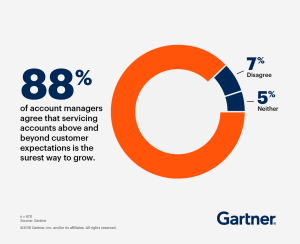
The same study admits that “account managers have a big job” on their hands in the modern SaaS business.
“Account managers are now expected to provide service, resolve issues and maximize consumption and ROI — all while selling additional new products and services. Account managers are also expected to achieve growth by connecting multiple products together into complex solutions.”
As Gartner says, account managers are there to keep existing customers happy, resolve any issues they experience and help them get the best out of your software products. However, they also play a key role in upselling and cross-selling relevant customers to more expensive plans and other products.
Email marketing retention strategies
Our last set of customer retention strategies focuses on email marketing campaigns that aim to keep users engaged, maximise customer value and prevent churn.
#17: Cross-selling campaigns
If you sell multiple software products, then cross-selling is an important strategy in terms of maximising customer value and preventing them from using similar products from rival providers.

For example, HubSpot offers separate software products for marketing, sales, customer service and a premium CMS, in addition to its free CRM and a range of other free tools.
Clearly, HubSpot wants customers signed up to its Marketing Hub to also buy into its Sales Hub rather than get this functionality from an alternative provider, such as Salesforce.
It’s not only a question of getting as much money from each customer as possible but also locking them into as much of your offering as possible. A customer signed up to multiple products is far more likely to keep using all of them, especially if these products integrate together seamlessly and make life easier when used together.
#18: Upselling campaigns
Upselling is a key marketing strategy for any SaaS company where the aim is to bump users up onto more expensive plans. Of course, the main aim here is to maximise revenue but incentivising users to upgrade is also a powerful strategy for keeping them engaged with new features and capabilities.
This typically starts with campaigns designed to turn free users into paying customers, whether you’re running a free trial or a 100% free plan as a lead generation strategy.
Here’s a classic example from Airtable:
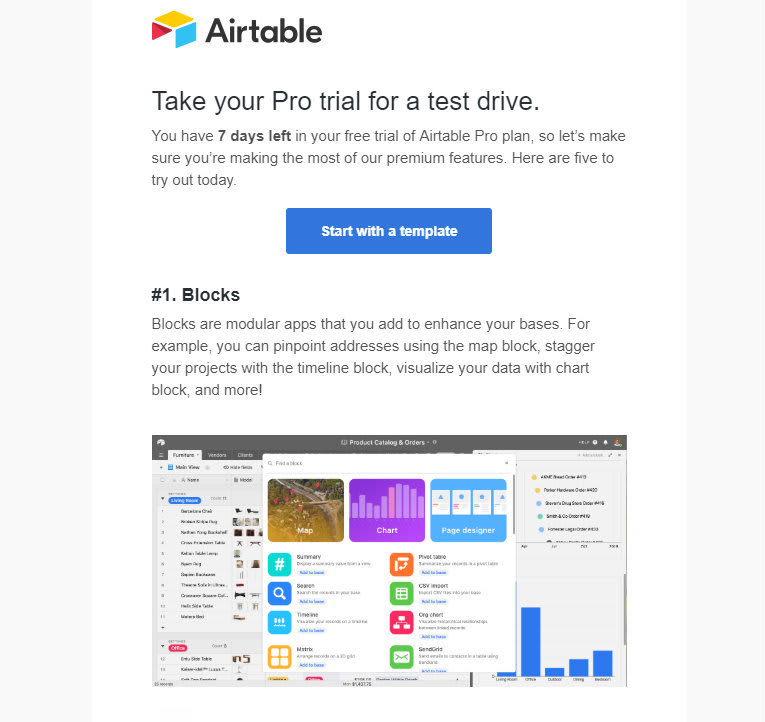
Upselling email campaigns are the staple strategy for SaaS companies but this isn’t the only approach you can take. For example, Zapier triggers modal windows within its app when a user clicks on features reserved for higher plans, prompting them to upgrade in order to unlock the feature for themselves.
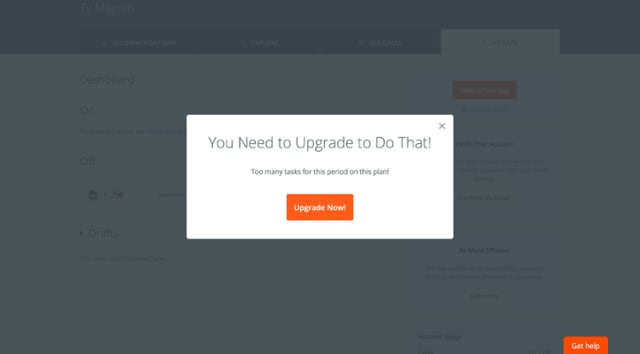
Better yet, you can combine both strategies and implement in-app prompts with upselling email campaigns although you need to be careful not to overwhelm and irritate users with constant appeals to spend more money.
#19: Re-engagement campaigns
All SaaS companies face the challenge of keeping users engaged but there comes a point where usage inevitably drops.
All of the strategies we’ve looked at in this article help to extend the period of engagement for as long as possible but there comes a point (or multiple points) where your customers show less interest in your product.
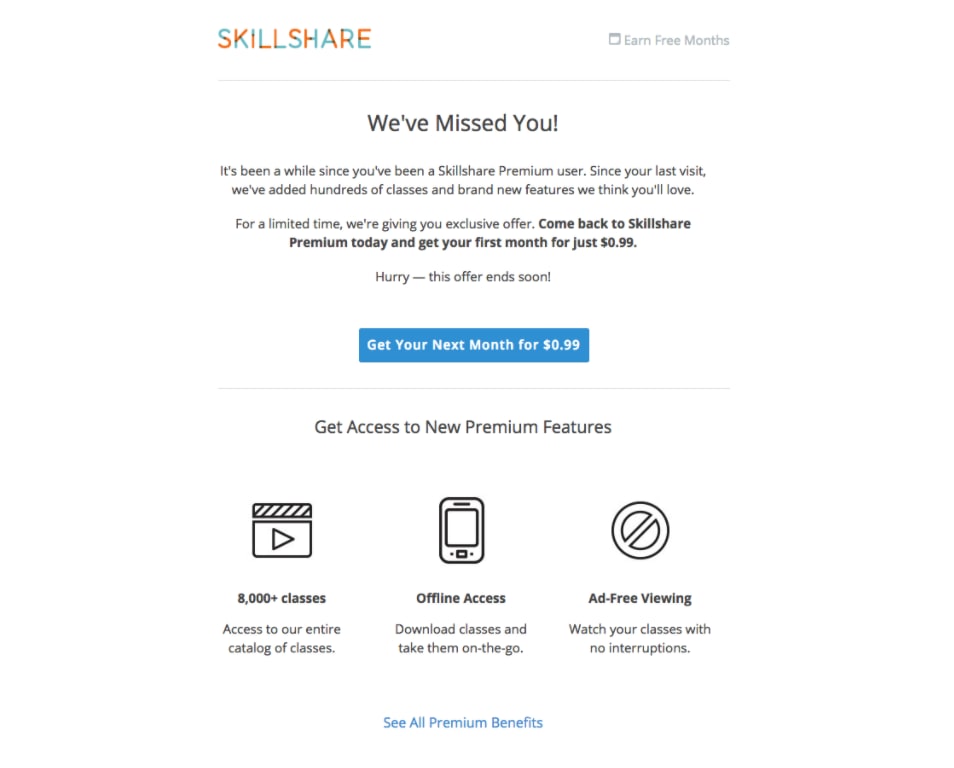
Your task here is to remind users of why they signed up in the first place and reignite some of the excitement that kept them using your product until their recent dip. You might try to incentivise re-engagement like the Skillshare example above but the aim is to inspire lasting re-engagement rather than short-lived, quick fixes.
Drive growth through customer retention
Churn rates are a problem for every SaaS company but, as mentioned in the intro of this article, increasing customer retention by 5% can boost revenue by up to +125% – not to mention the fact that you can grow if you’re losing customers for the sake of replacing them with new users.
Customer retention is the key to SaaS growth, which starts with holding on to your existing customers and, then, welcoming new ones to a growing user base. So apply the strategies we’ve covered in this article to maximise customer retention and keep an eye out for our next article on SaaS marketing for more tips.




